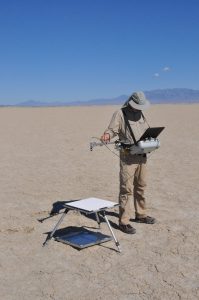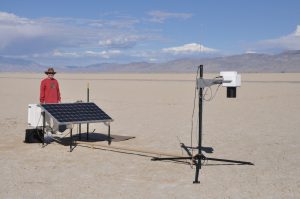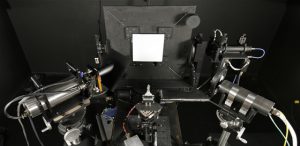Remote Sensing Group
The Remote Sensing Group in the College of Optical Sciences at the University of Arizona is best known for its work on the in-flight, radiometric calibration of remote sensing imagers using ground-based measurements at desert test sites. Radiometric calibration in this context refers to the ability to take the data from a sensor and convert it to a standard energy scale. Such work allows for the comparison of data from an array of imagers (by last count more than 30 sensors). The methods of the group have been in use since the mid-1980s and currently provide absolute radiometric calibration to better than 3%, both in accuracy and precision in the mid-visible.


The Remote Sensing Group is also actively involved in the laboratory calibration of imaging and non-imaging systems. Such work is two-fold. First, the reflectance-based approach for which the group is best known relies on an array of field equipment that must be well understood. Second, the group works hard to ensure that the transfer of laboratory standards to the field and to the in-flight sensors does not cause biases. As such, RSG has developed a state-of-the-art, NIST-traceable, radiometric laboratory and methods using solar irradiance for absolute radiometric calibration.

RSG’s work has led to participation in round-robin laboratory calibrations with national laboratories and sensor manufacturers. Our work also includes strong interactions with NASA and space agencies from other countries. And, of course, there are field trips that now take place on a monthly basis to exotic locales in Nevada, California, and New Mexico. All of this relies on a careful combination of laboratory and field measurements as well as computer modeling of atmospheric and surface effects to give a coherent view of the absolute radiometric calibration of imaging sensors critical to our understanding of the earth.

